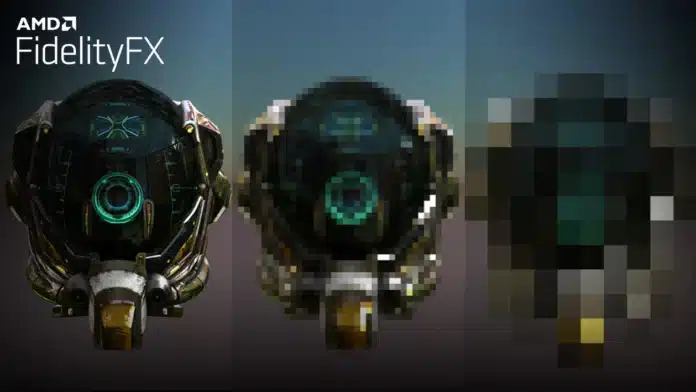AMD first launched its 1st gen FSR upscaling technology back in July 2021 and FSR 1.0 became the fastest adopted AMD software technology in AMD’s history. Riding on the success of FSR 1.0, AMD announced the 2nd gen of its open-source temporal upscaling technology, FidelityFX Super Resolution 2.0 a.k.a FSR 2.0 at GDC 2022.
AMD showcased the first look of FSR 2.0 in the game DEATHLOOP which can be viewed on AMD’s official YouTube account here.
AMD claims that the 2nd gen FSR has been built from the ground with learnings from FSR 1.0 implemented and improved further. With FidilityFX Super Resolution 2.0, AMD promises to deliver similar or better than native image quality and help boost framerates in supported games. FSR 2.0 will be available in titles starting Q2 2022.
How does FSR 2.0 work?
The FidelityFX Super Resolution 2.0 leverages an analytical approach that uses a set of advanced hand-coded algorithms that recognizes shapes or objects in the scene to generate an upscaled image that almost gets rid of jagged edges and blur from the final result.
As per AMD, FSR 2.0 doesn’t leverage Machine Learning technology and can be used on a wide range of devices that doesn’t have dedicated ML hardware. This currently includes support for the RX Vega series, RX 590 (and above), RX 5600 (and above), and RX 6500 XT (and above). AMD will also support FSR 2.0 on older-gen Nvidia GPUs including GTX 1070 (and above), GTX 16 series, RTX 2060 (and above), and RTX 3060 (and above).
Alongside the support for the above hardware, AMD also announced at GDC that FidelityFX Super Resolution 2.0 will also be fully supported on Xbox and will be available in the Xbox GDK for registered developers to use in their games.
FSR modes and Performance
Similar to the previous gen, the FSR 2.0 has four different quality modes where three primary quality modes — Quality, Balanced, and Performance will be available in every FSR 2.0 supported title. While the 4th mode — Ultra Performance is optional and its implementation will depend on the developer.
AMD has adjusted the modes a little from FSR 1.0 and has aligned the options more with Nvidia’s DLSS options. Quality Mode will be the highest setting with a 1.5x scale factor for a similar or better than native image quality and significant performance boost.
Balanced Mode will fall in middle with a 1.7x scale factor. The balanced mode offers an ideal compromise with a slight loss in image quality for a larger performance gain. While the Performace Mode with a 2x scale factor will provide major performance gain with almost native image quality.
FSR 2.0 also supports Dynamic Resolution Scaling, where the input resolution to upscale resolution is dynamically adjusted by the minimum framerate you want to always achieve in the game. Developers also have the option of applying RCAS sharpening to the upscaled output.
Currently, AMD is working with developers like Arkane Studios and Luminous Productions to bring FSR 2.0 to as many games as possible, with the first games being made available in Q2 2022. More information about FSR 2.0 will be available early in Q2 2022.




